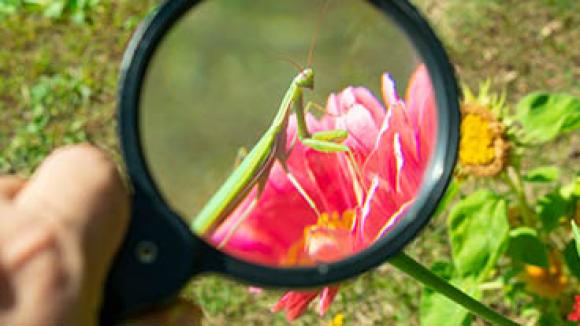The Missouri Master Naturalist program is a community-based natural resource education and volunteer service program for adults, sponsored by the Missouri Department of Conservation (MDC) and the University of Missouri Extension. The mission is to engage Missourians in the stewardship of our state's natural resources through science-based education and volunteer community service. Volunteers support conservation efforts and natural resource education in the local community.
Meramec Hills Master Naturalists
The Meramec Hills Chapter of Missouri Master Naturalist taught a series of public outreach classes entitled Sew Native. Classes were led by Alice and Arthur Sampe and met once a month for 90 minutes. The theme for the entire year was Missouri Native Trees. At the end of each class, participants were presented with a quilt block pattern which was inspired by the highlighted tree(s) of the month.
The nature segment was the primary focus, and making the quilt block was purely optional. Although few people actually made the quilt block each month, many took home the patterns, and all appreciated the connection between nature and art. The enthusiastic students began bringing in leaves and branches of trees for identification, and talked of how they shared with their family and friends the information they gained in class.
Because space was limited, class enrollment was limited to 15 per class. We had an average attendance of 11. We advertised by flyers, newspaper and radio. We received educational handouts from the Missouri Department of Conservation. Teaching the classes was a lot of work, but very rewarding.
Missourians for Monarchs, Naturalist and Gardeners, Mid-Missouri Region
A website has been created for anyone interested, and particularly members of Mid-Missouri Master Naturalist Chapters, members of Master Gardener Clubs and Federated Garden Clubs, that provides a quick resource of information regarding how to establish and maintain a pollinator garden.
Monarch Butterfly population has decreased 90 percent since 1997. There are many reasons for this, but many are man-made. Pesticide use, herbicide use and mowing during Monarch migration are just a few of the causes. Various organizations are working on stopping these harmful activities. Meanwhile, what can you do to help protect existing and to establish new pollinator habitat to increase the number of pollinator insects which are so important for pollinating our food supply. The goal of Missourians for Monarch is to establish new pollinator habitat in Central Missouri as part of the Missourians for Monarchs overall plan.
